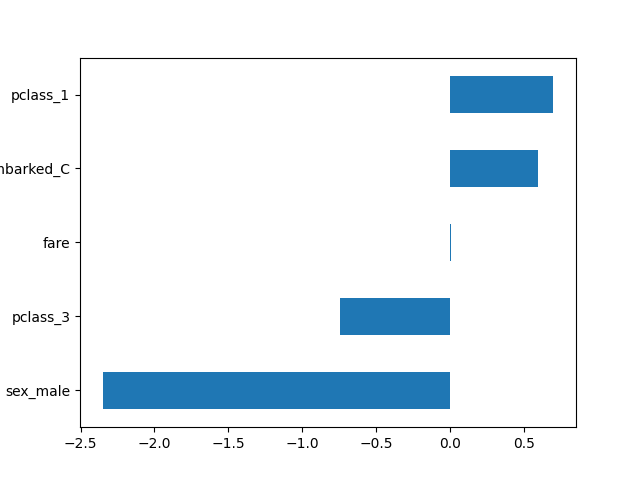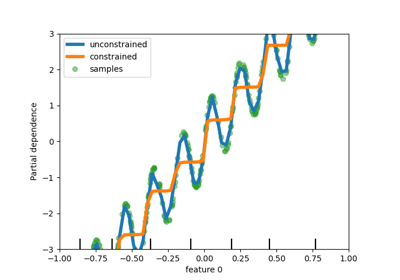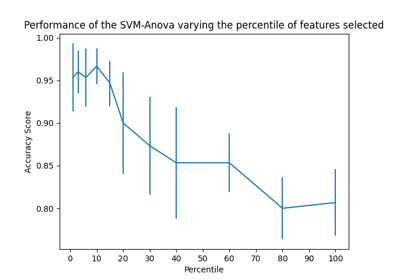备注
Go to the end 下载完整的示例代码。或者通过浏览器中的MysterLite或Binder运行此示例
介绍 set_output API#
这个例子将演示 set_output API to configure transformers to output pandas DataFrames. set_output can be configured per estimator by calling the set_output method or globally by setting set_config(transform_output="pandas"). For details, see SLEP018 .
首先,我们将iris数据集作为DataFrame加载,以演示 set_output API.
from sklearn.datasets import load_iris
from sklearn.model_selection import train_test_split
X, y = load_iris(as_frame=True, return_X_y=True)
X_train, X_test, y_train, y_test = train_test_split(X, y, stratify=y, random_state=0)
X_train.head()
要配置估计器,例如 preprocessing.StandardScaler 要返回数据帧,请调用 set_output .此功能需要安装pandas。
from sklearn.preprocessing import StandardScaler
scaler = StandardScaler().set_output(transform="pandas")
scaler.fit(X_train)
X_test_scaled = scaler.transform(X_test)
X_test_scaled.head()
set_output 可以在 fit 配置 transform 事后。
scaler2 = StandardScaler()
scaler2.fit(X_train)
X_test_np = scaler2.transform(X_test)
print(f"Default output type: {type(X_test_np).__name__}")
scaler2.set_output(transform="pandas")
X_test_df = scaler2.transform(X_test)
print(f"Configured pandas output type: {type(X_test_df).__name__}")
Default output type: ndarray
Configured pandas output type: DataFrame
中 pipeline.Pipeline , set_output 配置输出数据帧的所有步骤。
from sklearn.feature_selection import SelectPercentile
from sklearn.linear_model import LogisticRegression
from sklearn.pipeline import make_pipeline
clf = make_pipeline(
StandardScaler(), SelectPercentile(percentile=75), LogisticRegression()
)
clf.set_output(transform="pandas")
clf.fit(X_train, y_train)
管道中的每个Transformer都配置为返回数据帧。这意味着最终的逻辑回归步骤包含输入的特征名称。
clf[-1].feature_names_in_
array(['sepal length (cm)', 'petal length (cm)', 'petal width (cm)'],
dtype=object)
备注
如果使用该方法 set_params ,该Transformer将被具有默认输出格式的新转换器替换。
clf.set_params(standardscaler=StandardScaler())
clf.fit(X_train, y_train)
clf[-1].feature_names_in_
array(['x0', 'x2', 'x3'], dtype=object)
要保持预期行为,请使用 set_output 提前在新Transformer上
scaler = StandardScaler().set_output(transform="pandas")
clf.set_params(standardscaler=scaler)
clf.fit(X_train, y_train)
clf[-1].feature_names_in_
array(['sepal length (cm)', 'petal length (cm)', 'petal width (cm)'],
dtype=object)
接下来,我们加载泰坦尼克号数据集来演示 set_output 与 compose.ColumnTransformer 和异类数据。
from sklearn.datasets import fetch_openml
X, y = fetch_openml("titanic", version=1, as_frame=True, return_X_y=True)
X_train, X_test, y_train, y_test = train_test_split(X, y, stratify=y)
的 set_output API可以通过使用全局配置 set_config 和设置 transform_output 到 "pandas" .
from sklearn import set_config
from sklearn.compose import ColumnTransformer
from sklearn.impute import SimpleImputer
from sklearn.preprocessing import OneHotEncoder, StandardScaler
set_config(transform_output="pandas")
num_pipe = make_pipeline(SimpleImputer(), StandardScaler())
num_cols = ["age", "fare"]
ct = ColumnTransformer(
(
("numerical", num_pipe, num_cols),
(
"categorical",
OneHotEncoder(
sparse_output=False, drop="if_binary", handle_unknown="ignore"
),
["embarked", "sex", "pclass"],
),
),
verbose_feature_names_out=False,
)
clf = make_pipeline(ct, SelectPercentile(percentile=50), LogisticRegression())
clf.fit(X_train, y_train)
clf.score(X_test, y_test)
0.801829268292683
通过全局配置,所有转换器都会输出数据帧。这使我们能够轻松地用相应的特征名称绘制逻辑回归系数。
import pandas as pd
log_reg = clf[-1]
coef = pd.Series(log_reg.coef_.ravel(), index=log_reg.feature_names_in_)
_ = coef.sort_values().plot.barh()

为了证明 config_context 下面的功能,让我们先重置一下 transform_output 其默认值。
set_config(transform_output="default")
配置输出类型时, config_context 当时的配置 transform 或 fit_transform 被称为才是最重要的。仅在构建或安装Transformer时设置这些不会产生任何影响。
from sklearn import config_context
scaler = StandardScaler()
scaler.fit(X_train[num_cols])
with config_context(transform_output="pandas"):
# the output of transform will be a Pandas DataFrame
X_test_scaled = scaler.transform(X_test[num_cols])
X_test_scaled.head()
在上下文管理器之外,输出将是NumPy数组
X_test_scaled = scaler.transform(X_test[num_cols])
X_test_scaled[:5]
array([[ 0.62830616, -0.06320955],
[-0.05798371, -0.51570367],
[ 1.31459603, 0.56662405],
[-0.6756446 , -0.51227857],
[-0.74427358, -0.49694966]])
Total running time of the script: (0分0.155秒)
相关实例
Gallery generated by Sphinx-Gallery <https://sphinx-gallery.github.io> _




